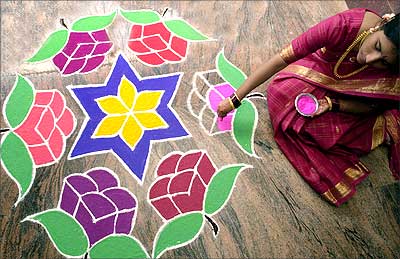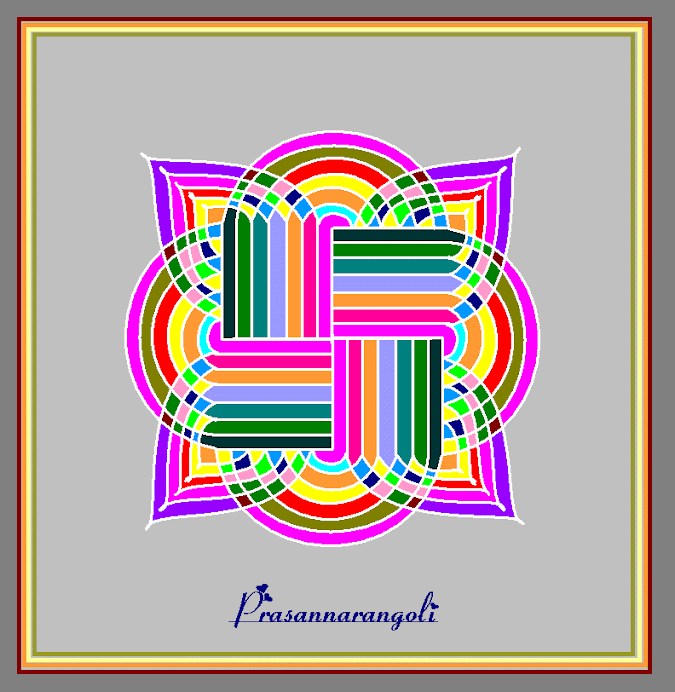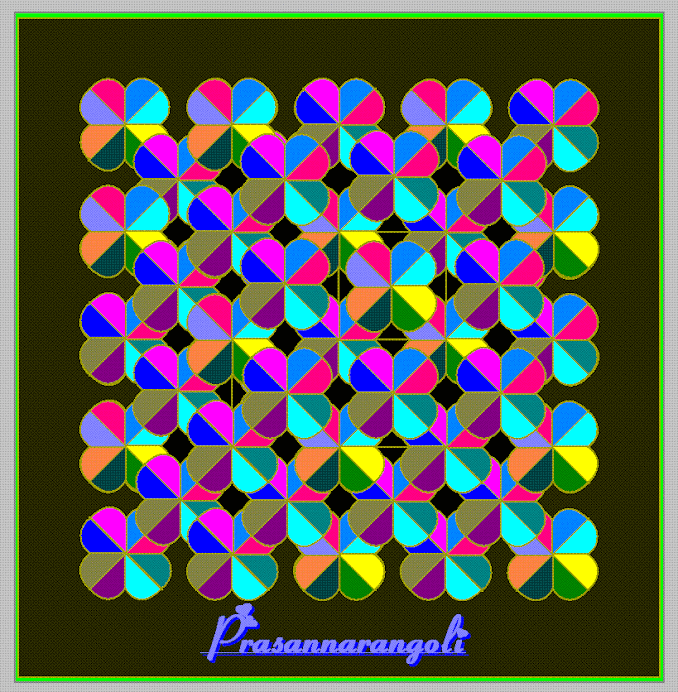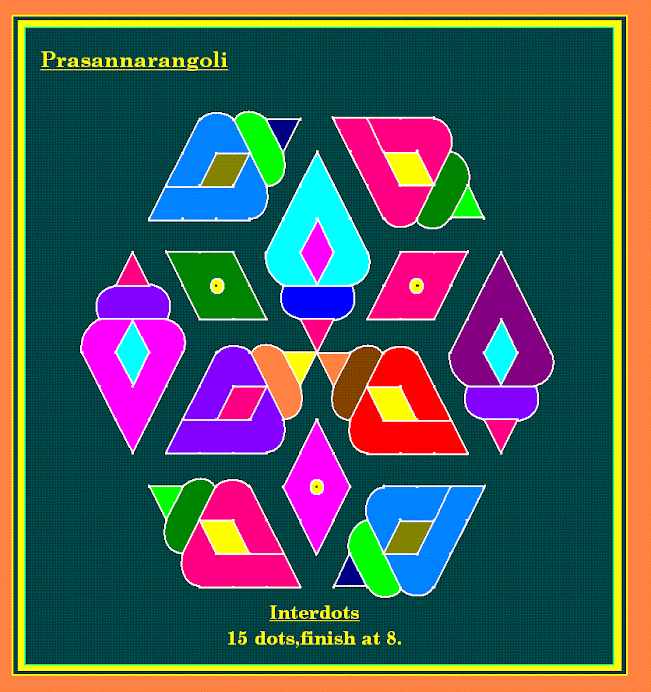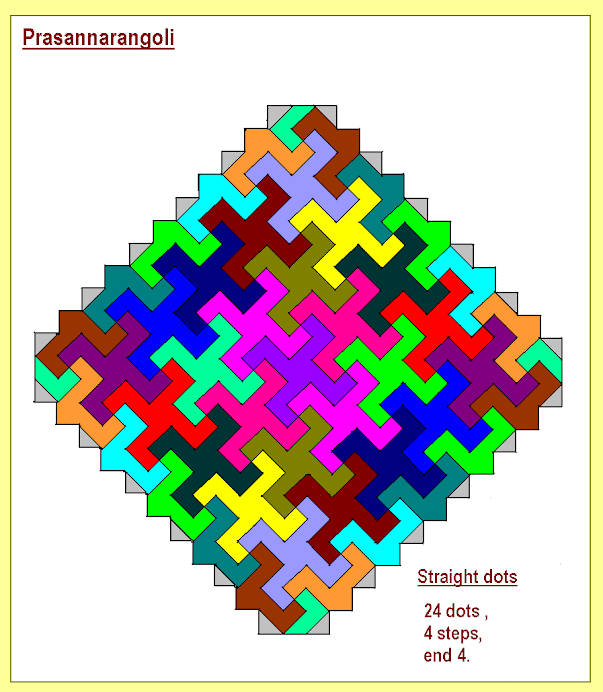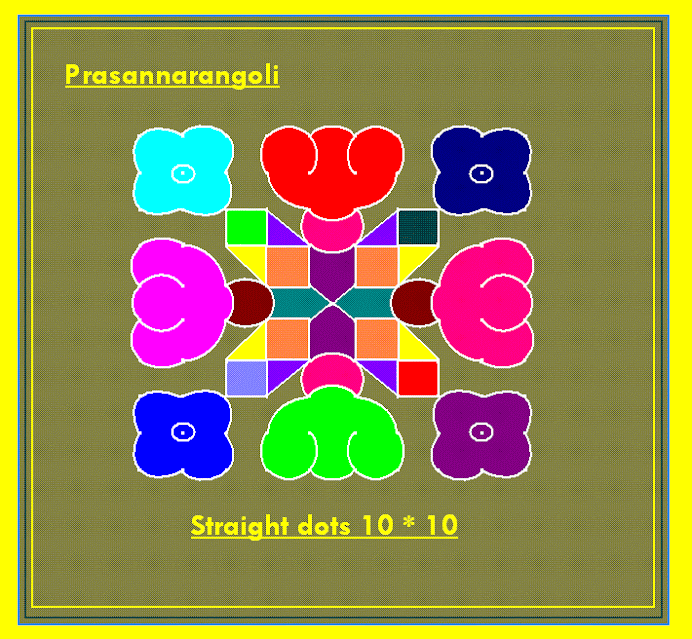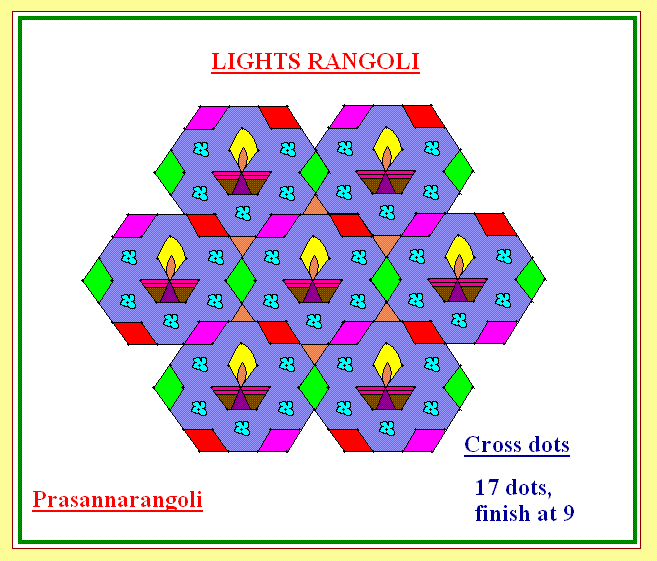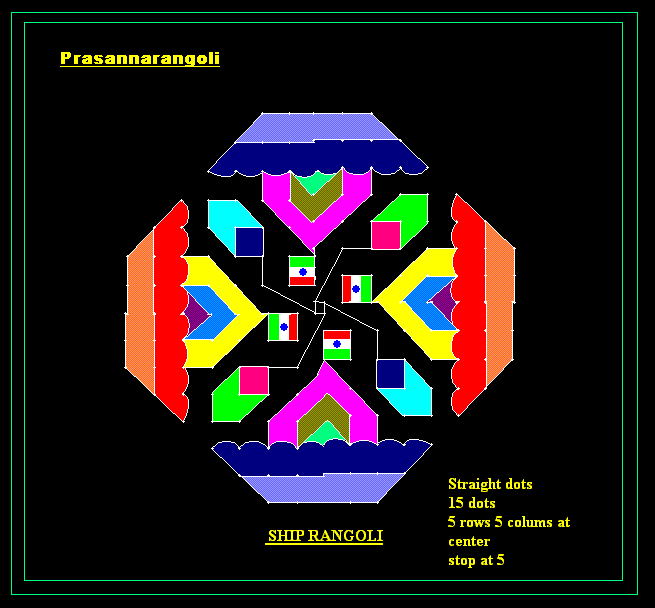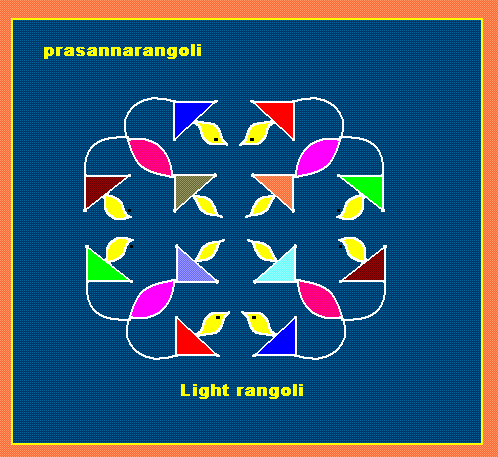skip to main |
skip to sidebar
In ancient times, intricately created colourful patterns would decorate the entrance of each home.
These patterns, known as rangolis, would be made anew each day with white and coloured powders, by the ladies of the house.
Today, you no longer see elaborate rangolis
outside most homes, particularly in urban areas. Those that have it
prefer the readymade 'sticker' versions. But, come Diwali, the festival
of lights, and women once again create beautiful rangolis outside their homes.
Rangoli is a folk art, where designs are
created on the floor. The origin of this art can be traced to the
Puranas (works on Hindu mythology). Rangoli is a Sanskrit word and refers to the creative expression of art through the use of colour.
Image: Padma, 18, completes a rangoli
(powder colour decoration) to celebrate the Hindu festival of Diwali
(festival of lights) at her home in Bangalore (Diwali 2001). Hindus
decorate their houses with rangolis and light oil lamps and candles to celebrate Diwali. Rangolis,
symbolising peace and harmony are prepared by almost every Hindu
household to usher in the blessings of God on a festive occasion.
